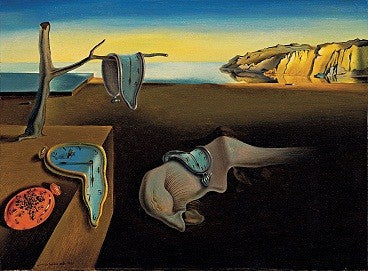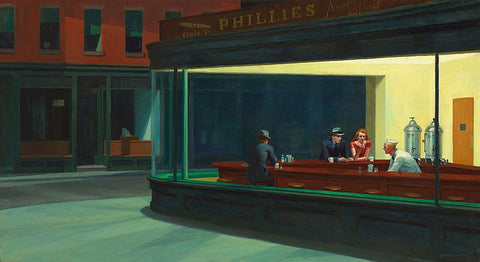Your Cart is Empty
Free Shipping on orders $499+

One of the benefits of a Samsung Frame TV and Deco TV frame is that you can make your television look like a literal work of art.
Thanks to the Samsung art market and an artistic frame for the TV, you can get a high-resolution image of a famous painting from history to display on your wall. When you're in the room or when people come over to visit, you can display your vivid piece of artwork and make your home feel like The Met.
Or the Louvre. Or the Rijksmuseum. Or the Art Institute of Chicago. Or. . .
You get the picture. (No pun intended.)
But which paintings should you feature in your living room-turned-gallery? Here are four world-famous artworks you can display on your Samsung Frame TV.
 This is one of the most recognizable works of Surrealism, as well as one of Dalí's most famous paintings. It was first shown at the Julien Levy Gallery in 1932, and two years later, it was donated to the Museum of Modern Art (MoMA) in New York City.
This is one of the most recognizable works of Surrealism, as well as one of Dalí's most famous paintings. It was first shown at the Julien Levy Gallery in 1932, and two years later, it was donated to the Museum of Modern Art (MoMA) in New York City.
It's often referred to as "Melting Clocks" or "Melting Watches."
It represents Dalí's ideas about "softness" and "hardness." The melting/drooping clocks represent time as something that is fluid and subjective, not a hard and rigorous construct that is the same for everyone.
While some art historians believe that Dalí was inspired by Albert Einstein's theory of relativity, he actually told Ilya Prigogine, a Belgian chemist, in a letter thatthe watches "were not inspired by the theory of relativity, but by the surrealist perception of a Camembert cheese melting in the sun."
If you notice the human face in the lower center of the painting, that is a representation of Dalí himself — he often included abstract images of himself or his wife Gala in his paintings. You can often see representations of her in paintings like The Madonna of Port Lligat, Dream Caused by the Flight of a Bee Around a Pomegranate a Second Before Awakening, and of course, Portrait of Gala.
Dalí also used ants in his paintings as a symbol of decay, and the ants in the orange clock at the bottom left may represent the decay and breakdown of time. Or they're attracted by the melting Camembert.
Also called "De sterrennacht" in Dutch, this is one of the most recognizable paintings in all of Western art. Van Gogh painted it while he was in the asylum at Saint-Rémy-de-Provence. Just like The Persistence of Memory, it also lives in MoMA and has done so since 1941.
It's more than just a reflection of the night sky, some have said it's a window into Van Gogh's inner world. He supposedly painted it in the morning just before the sunrise, looking out of his eastern-facing room at the asylum.
The stars aren't just little pinpricks of light, but swirling bursts of light surrounded by long trails of blues, greens, and yellows.
There is also a village that Van Gogh added although it wasn't there at the time. The houses are tiny boxes with bright yellow windows that suggest comfort and community — a life being lived beyond the bars on Vincent's windows. (Not only did he have a second-floor room, he had a ground-floor studio.)
During the year he stayed at the asylum in Saint-Rémy-de-Provence, this wasn't the only painting he created. He made many different paintings of the view, including Mountainous Landscape Behind Saint-Rémy, The Enclosed Wheat Field After a Storm, and the Green Wheat Field. He also painted his famous Irises painting, as well as the blue self-portrait of him with the bandage around his head (after he cut it off).
 Painted in 1942, Edward Hopper's oil-on-canvas painting Nighthawks is one of the most recognized pieces of American artwork, and it lives in the Art Institute of Chicago. (Hopper sold it to the AIC for $3,000 a few months after it was finished, equal to about $54,000 today.)
Painted in 1942, Edward Hopper's oil-on-canvas painting Nighthawks is one of the most recognized pieces of American artwork, and it lives in the Art Institute of Chicago. (Hopper sold it to the AIC for $3,000 a few months after it was finished, equal to about $54,000 today.)
The painting — which was originally called "Night Hawks" — portrays four people in a late-night diner in Greenwich Village, although it has been parodied with famous characters from American history and popular culture.
The diner is bathed in artificial light, and there are four people inside — three diners at the counter and the counterman. Two of the characters, a man and a woman, are sitting together, while a third man is sitting with his back to us. The counterman is bending over to reach something under the counter.
Some people have suggested that Hopper was either inspired by Ernest Hemingway's short story, The Killers" or "A Clean, Well-Lighted Place." But when he was asked about the loneliness of the painting, he said that he "didn't see it as particularly lonely." Instead, he said, "unconsciously, probably, I was painting the loneliness of a large city."
It has inspired many other pieces of art, as well as Tom Waits' 1975 album,Nighthawks at the Diner. (Listen to "Putnam County" to put yourself into the mindset of Hopper's painting.)
Andy was a pioneer of the Pop Art movement, and you've probably seen many of his pieces without even realizing who made them. (Likethe Marilyn Monroe diptych.) Warhol's Campbell's Soup Cans — like two of the other paintings mentioned here — hangs in MoMA
Warhol's Campbell's Soup Cans features 32 total canvases, each showing a different variety of Campbell's soup that was available at the time. A can of Campbell's soup would have cost approximately ten cents in 1962. He used a silkscreen printing process to create the works as a way to emphasize mass production and consumer culture, which fascinated him at the time. His goal in repeating the same images over and over, with only slight variations, was to blur the line between high art and the mass-produced goods we see every day.
Was Warhol telling us something about our individuality and conformity, too? Is he saying that we're simply interchangeable parts of a larger system? That we all have slight differences — chicken noodle versus cream of chicken versus cream of broccoli — but that we're mostly the same?
Warhol held a mirror up to the consumerism that plays a role in our lives by elevating the mundane and everyday to high art. It also reminds us that art can be found in unexpected places.







